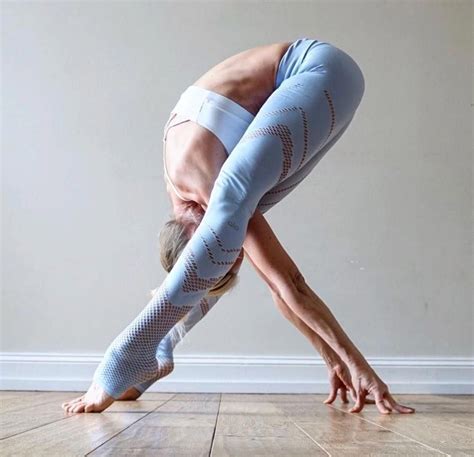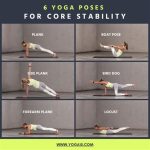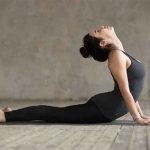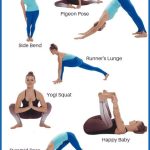Mastering the Most Challenging Yoga Poses: A Complete Guide to Conquer Seven Advanced Postures
Yoga is a journey of strength, flexibility, and balance, often leading practitioners to explore increasingly difficult poses. This guide delves into seven of the most challenging yoga postures, breaking down their complexities, addressing common misconceptions, and providing a roadmap for mastering them. Whether you’re an experienced yogi looking to deepen your practice or a beginner with aspirations to advance, this article will help you understand the physical, mental, and technical demands of these difficult asanas.
1. Introduction
The journey of yoga offers both physical and mental transformation, but as practitioners progress, they often encounter poses that require significant discipline, strength, flexibility, and perseverance. In this article, we will explore how to approach and master seven of the most difficult yoga poses, from a range of perspectives, integrating expert advice, evidence-based techniques, and real-world applications. Along the way, we’ll provide practical tips to enhance your practice, tackle common challenges, and ensure safe progression toward conquering these advanced postures.
2. Key Concepts
- Strength: Many advanced yoga poses require significant upper body, core, and leg strength.
- Flexibility: Deep flexibility in the hips, spine, shoulders, and hamstrings is necessary to achieve the full expression of certain poses.
- Balance: Mastering balance is crucial for poses that require precision and stability.
- Focus: Concentration and mental focus are key to maintaining poses for an extended duration.
- Breath Control: Pranayama, or breath control, helps with endurance and steadiness during challenging postures.
- Patience: Achieving mastery of advanced poses takes time, consistent practice, and patience.
3. Historical Context
Yoga poses, or asanas, have evolved over centuries, with many modern practices deriving from ancient traditions. Historically, difficult poses were often reserved for advanced yogis as part of a meditative journey toward enlightenment. Today, these postures are embraced by modern practitioners seeking not only physical mastery but also the mental resilience that comes from overcoming physical challenges. Understanding the roots of these poses provides a deeper appreciation for their complexity and significance in the broader scope of yoga philosophy.
4. The Seven Most Challenging Yoga Poses
4.1 Handstand (Adho Mukha Vrksasana)
The handstand is often considered the pinnacle of strength and balance in yoga. It requires a strong core, stable shoulders, and intense focus. One of the key challenges is overcoming the fear of falling.
Common Challenges
- Fear of inversion
- Lack of upper body strength
- Poor core engagement
Proposed Solutions
- Practice near a wall for support
- Build strength through poses like plank and downward-facing dog
- Engage your core by drawing your navel towards your spine
4.2 Scorpion Pose (Vrschikasana)
Scorpion Pose demands an extreme backbend while balancing on the forearms. It’s a blend of both strength and flexibility, particularly in the spine and shoulders.
Common Challenges
- Limited shoulder flexibility
- Weak core muscles
- Difficulty maintaining balance
Proposed Solutions
- Stretch and strengthen the shoulders through shoulder-opening exercises
- Develop core strength with boat pose and leg lifts
- Practice dolphin pose to build forearm balance
4.3 Eight-Angle Pose (Astavakrasana)
This arm balance challenges your core, arms, and balance, requiring the body to twist while balancing on the hands.
Common Challenges
- Poor wrist strength
- Lack of core engagement
- Difficulty finding balance in the twist
Proposed Solutions
- Practice wrist-strengthening exercises
- Engage the core by practicing side planks
- Twist through poses like revolved triangle to build flexibility
4.4 King Pigeon Pose (Kapotasana)
King Pigeon Pose is a deep backbend that also opens the hips, shoulders, and chest. It’s known for its difficulty due to the extreme flexibility required, especially in the spine and shoulders.
Common Challenges
- Limited hip and shoulder flexibility
- Lower back strain
- Difficulty in breath control
Proposed Solutions
- Gradually open the hips with lunges and pigeon pose variations
- Focus on lengthening the spine to prevent lower back strain
- Use breath to relax into the pose
4.5 Firefly Pose (Tittibhasana)
Firefly Pose is a challenging arm balance that tests flexibility, strength, and coordination. It demands open hips and a strong core, as well as wrist and arm strength.
Common Challenges
- Tight hamstrings and hips
- Weak arms and wrists
- Difficulty maintaining balance
Proposed Solutions
- Incorporate hamstring stretches like seated forward bends
- Strengthen arms with push-ups and chaturanga
- Use props like blocks for support as you build balance
4.6 Lotus Pose (Padmasana)
While Lotus Pose might seem simple, it requires deep flexibility in the hips and knees. It’s foundational for seated meditation but can be painful or harmful without proper flexibility.
Common Challenges
- Limited hip mobility
- Knee discomfort
- Difficulty maintaining posture for long periods
Proposed Solutions
- Gradually open the hips through poses like half-lotus or bound angle
- Be mindful of knee positioning to avoid injury
- Use props or cushions to support extended seated practice
4.7 Forearm Stand (Pincha Mayurasana)
Pincha Mayurasana, or forearm stand, is a challenging inversion that tests both strength and balance. Unlike a handstand, this pose demands more shoulder stability and core engagement.
Common Challenges
- Shoulder instability
- Lack of core engagement
- Fear of falling
Proposed Solutions
- Strengthen the shoulders through dolphin pose and plank variations
- Focus on core engagement with boat pose and leg raises
- Practice near a wall to build confidence
5. Current State Analysis
As yoga continues to grow in popularity worldwide, more practitioners are striving to master advanced poses. However, the current landscape shows that many struggle with these poses due to a lack of foundational strength, flexibility, or guidance. Workshops, online tutorials, and professional yoga coaching are emerging as popular solutions to address these gaps. Additionally, there is growing interest in understanding the mental and emotional benefits of mastering difficult poses, including their impact on stress reduction and mental resilience.
6. Practical Applications
The practical application of advanced yoga poses extends beyond physical fitness. For many practitioners, these challenging poses become a metaphor for overcoming obstacles in life. The discipline and perseverance required to master difficult poses mirror personal growth and mental fortitude. Additionally, the benefits of these poses, such as improved posture, increased flexibility, and enhanced focus, contribute to overall well-being, making them valuable in both physical and mental health regimens.
7. Case Studies
| Case Study | Key Challenges | Solution Strategies | Outcome |
|---|---|---|---|
| John’s Journey to Mastering Handstand | Fear of inversion, weak shoulders | Used wall support, practiced shoulder strengthening exercises | Achieved stable

|







